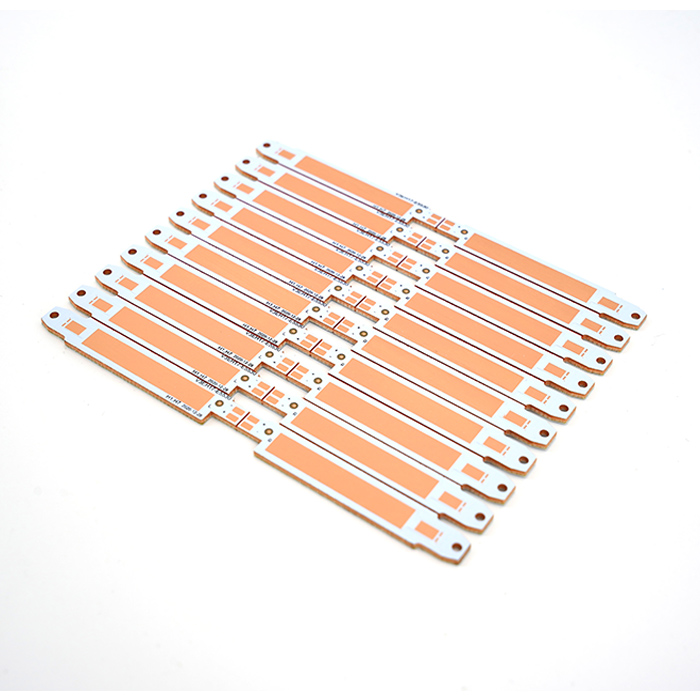Applications of Copper Core PCBs
2024-07-13
A Copper Core PCB (Printed Circuit Board), commonly abbreviated as Copper PCB or Copper Clad PCB, refers to a type of circuit board where a layer or core of copper is used as the base material for the PCB. Here’s a detailed overview of Copper Core PCBs, their construction, applications, and advantages:
Construction and Features:
1. Base Material:
- Copper Core: The core material of the PCB is composed primarily of copper. This copper layer serves as a heat sink and provides excellent thermal conductivity.
- Dielectric Layer: Surrounds the copper core to insulate it from other layers and components on the PCB.
2. Layer Configuration:
- Single-Layer: Copper core PCBs can be single-layer, with copper on one side of the core material.
- Multi-Layer: Can also be designed with multiple layers of copper cores separated by dielectric layers, accommodating complex circuit designs.
3. Copper Thickness:
- Varies: The thickness of the copper layer can vary based on the application's thermal and electrical conductivity requirements.
Applications:
- LED Lighting: Used extensively in LED applications due to their ability to dissipate heat effectively, enhancing the lifespan and performance of LEDs.
- Power Supplies: Commonly used in power supply units (PSUs) and voltage regulators where thermal management and reliability are critical.
- Automotive: In automotive electronics, especially in components that require heat dissipation and robustness.
- Industrial Equipment: Used in industrial automation, control systems, and high-power electronics where heat dissipation and durability are crucial.
Advantages:
- Thermal Management: Copper core PCBs have excellent thermal conductivity, allowing efficient heat dissipation from components, which is crucial for high-power applications.
- Mechanical Strength: The copper core provides structural integrity and durability to the PCB, making it less susceptible to mechanical stress and vibrations.
- High Power Handling: Suitable for applications requiring high current and voltage, as copper is an excellent conductor of electricity.
Considerations:
- Cost: Copper core PCBs can be more expensive compared to standard PCBs due to the additional copper material and specialized manufacturing processes.
- Design Complexity: Designing copper core PCBs requires consideration of thermal management and mechanical stability, influencing layout and component placement.
- Manufacturing: Requires expertise in PCB manufacturing to ensure proper bonding of the copper core with dielectric layers and copper traces.
Industry Standards and Regulations:
- Compliance: Must meet industry standards (e.g., IPC standards) and regulatory requirements for electrical performance, reliability, and safety.
Copper core PCBs are favored in applications where efficient heat dissipation and robust electrical performance are essential.



